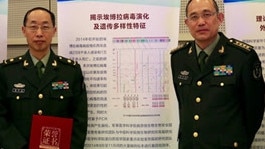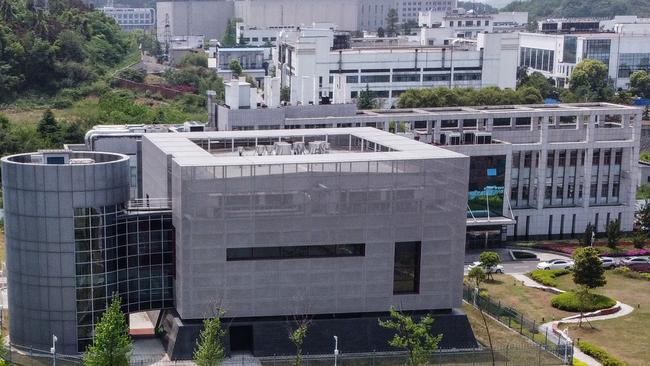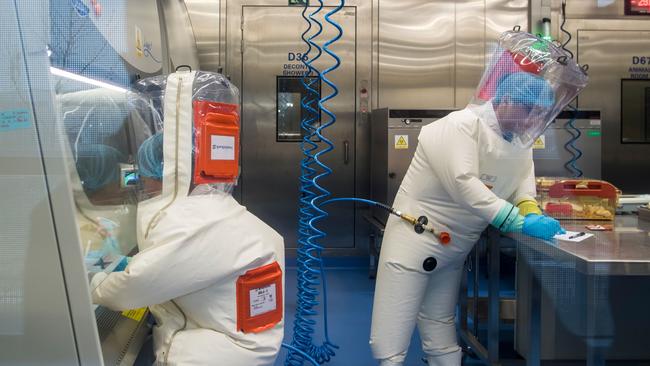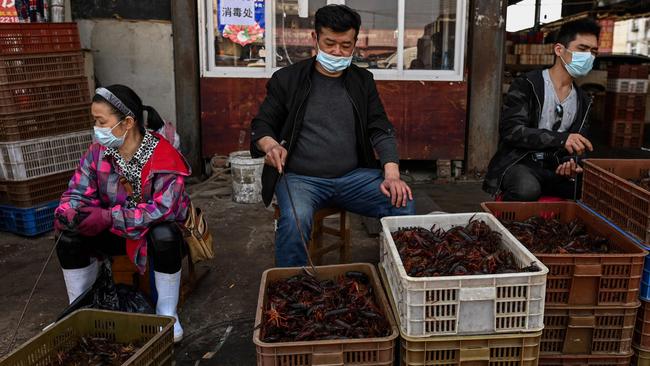The Covid Files: How the Red Army oversaw coronavirus research
China’s People’s Liberation Army has been involved in scientific research, co-funded by the Australian Government, into the origins of the coronavirus, which have been published in esteemed medical journals.
NSW Coronavirus News
Don't miss out on the headlines from NSW Coronavirus News. Followed categories will be added to My News.
- In reality, we’re united with The States on China
- Sharri Markson exposes details of Chinese cover-up on Fox News
- Criticism of China’s virus response does not equal support for Trump
- Top Australian scientist’s Chinese friendship
EXCLUSIVE
China’s People’s Liberation Army has been involved in scientific research, co-funded by the Australian government, into the origins of the coronavirus which has been published in esteemed medical journals.
In an explosive revelation, a study co-funded by the Australian Research Council and the Chinese government, and trumpeted by The University of Sydney as helping to solve the puzzle of how COVID-19 transferred from animals to humans, relied on a key laboratory in an institute in the People’s Liberation Army’s Academy of Military Medical Sciences to conduct its “genetic sequencing” and “virus isolation”.
The director of the microbiology institute, Professor Wu-Chan Cao, who is thanked in the paper’s acknowledgments for his “substantial contribution”, has the rank of colonel and is a Wuhan Institute of Virology board member in a clear conflict of interest.

NEW MOBILE PHONE DATA POINTS TO OCTOBER WUHAN LAB ACCIDENT
One of the study’s co-authors, Yi-Gang Tong, began working in the same PLA-run microbiology institute in 2005.
The Wuhan Institute of Virology is at the centre of a global probe into whether the naturally-occurring coronavirus was accidentally released from its laboratory or came from a local wet market, which scientists believe is the most likely scenario.
This study is one of two scientific papers on the coronavirus undertaken by University of Sydney virologist and evolutionary biologist, Professor Edward Holmes in conjunction with researchers in China, who received funding from the Chinese government.
Professor Holmes is highly regarded in his field and the only western scientist that was part of the consortium of the Shanghai Public Health Clinical Centre and School of Public Health who first uploaded the genetic sequence of the coronavirus on January 11.
There is no suggestion that Professor Holmes’ own contribution to the research project was anything but independent, ethical and of the highest scientific standards. His work on the papers was funded by Australian grants only.
His February 2020 study looked at whether an animal called a pangolin — and not only bats — could be an intermediate host of the coronavirus to facilitate its transfer to humans.

ARMY FACILITIES
Professor Holmes has used this research to call for a ban on wet markets and the trade in wildlife.
The study titled “Identifying SARS-CoV-2 related coronaviruses in Malayan pangolins” was completed and submitted by February 7, 2020 and it was peer-reviewed and published in Nature online on March 26.
“Although bats are likely reservoir hosts for SARS-CoV-2, the identity of any intermediate host that might have facilitated transfer to humans is unknown,” the study states in its summary.
“Here we report the identification of SARS-CoV-2 relate coronaviruses in Malayan pangolins seized in anti-smuggling operations in southern China.”
The Daily Telegraph can reveal that the “sequencing” and “virus isolation” on which the study relied was done by laboratories run by the PLA in China.
In fine print at the very end of the paper in the acknowledgments section, it states: “We thank Prof. Wu-Chun Cao, Dr. Na Jia, Dr. Ya-Wei Zhang, Dr. Jia-Fu Jiang, Dr. Bao-Gui Jiang, and their team in State Key Laboratory of Pathogen and Biosecurity, Beijing Institute of Microbiology and Epidemiology, Beijing for their substantial contributions to this study, including co-ordinating among research parties, conducting virus isolation, qPCR and sequencing.”
The State Key Laboratory of Pathogen and Biosecurity is part of the Beijing Institute of Microbiology and Epidemiology, which sits under the Academy of Military Medical Sciences.
The Academy of Military Sciences is the highest-level research institute of the People’s Liberation Army.

RANKING RESEARCHER
The director of the Beijing Institute is Professor Wu-Chan Cao, who also received the top acknowledgment in the research paper for his “substantial contributions to this study” including “co-ordinating among research parties”.
In his official biography he is pictured in his military uniform and it states he has the “rank of colonel”.
“Now the director of the Institute of Microbiology and epidemiology, Military Medical Science Academy of the PLA, director of the State Key Laboratory of pathogen and Biosecurity,” it states.
Colonel Cao also sits on the board for the Wuhan Institute of Virology’s Scientific Advisory Committee of Centre for Emerging Infectious Diseases, according to its website.
A University of Sydney spokeswoman said Professor Holmes’ work was “academically independent” and that he had not received any research or personal funding from the Chinese Government or Chinese companies or institutions.
“Where he has undertaken research with scientists from China his work has been funded by the Australian Research Council, the National Health and Medical Research Council and the University of Sydney,” she said.

“We strongly defend the right of our researchers to collaborate with scientists around the world in line with all relevant Australian laws and government guidelines.
“Prof Holmes has no link with the Academy of Military Science. Their involvement with the research was declared in the acknowledgments, as is standard practice.
“Dr Cao co-ordinated the laboratory work before Prof Holmes’ involvement. He did not direct or supervise the work of Prof Holmes which was undertaken independently.”
The University of Sydney website states: “Professor Holmes, a co-author, is the only non-China based academic on the paper.”
Another co-authored paper by Professor Holmes, published in Cell, provides commentary on samples taken from the Wuhan wet market and states “not all of the early (COVID-19) were market associated, it is possible that the emergence story is more complicated than first suspected”.
This was cited in a press release by the Embassy of the People’s Republic of China in the Commonwealth in Australia that criticised media coverage “playing up the so-called wet market in China”.

WORRYING LINKS
Charles Sturt University Professor of Public Ethics Clive Hamilton supported the calls for an oversight agency by Morrison government MPs.
While there was no doubting the honesty and professionalism of Australian researchers, legitimate questions should be asked as to the involvement of the Chinese military.
“It’s clear that the universities are not properly overseeing the kinds of collaborations that their scientists are undertaking because there are many instances of sensitive research in Australian universities being done in collaboration with Chinese scientists with links to China’s military or who are likely passing valuable information on to China’s companies or intelligence services,” he said.
“Universities have been very reluctant to admit there is a problem and have consistently hidden behind the Defence Trade Controls Act which prohibits the export of sensitive technology but does not prohibit Chinese military scientists working on sensitive projects in Australian laboratories.”
The Australian Strategic Policy Institute’s analysis of Chinese institutions has designated the Academy of Military Science very high risk as the PLA’s premier institution for military science. It is responsible for leading and co-ordinating military science for the whole military.
